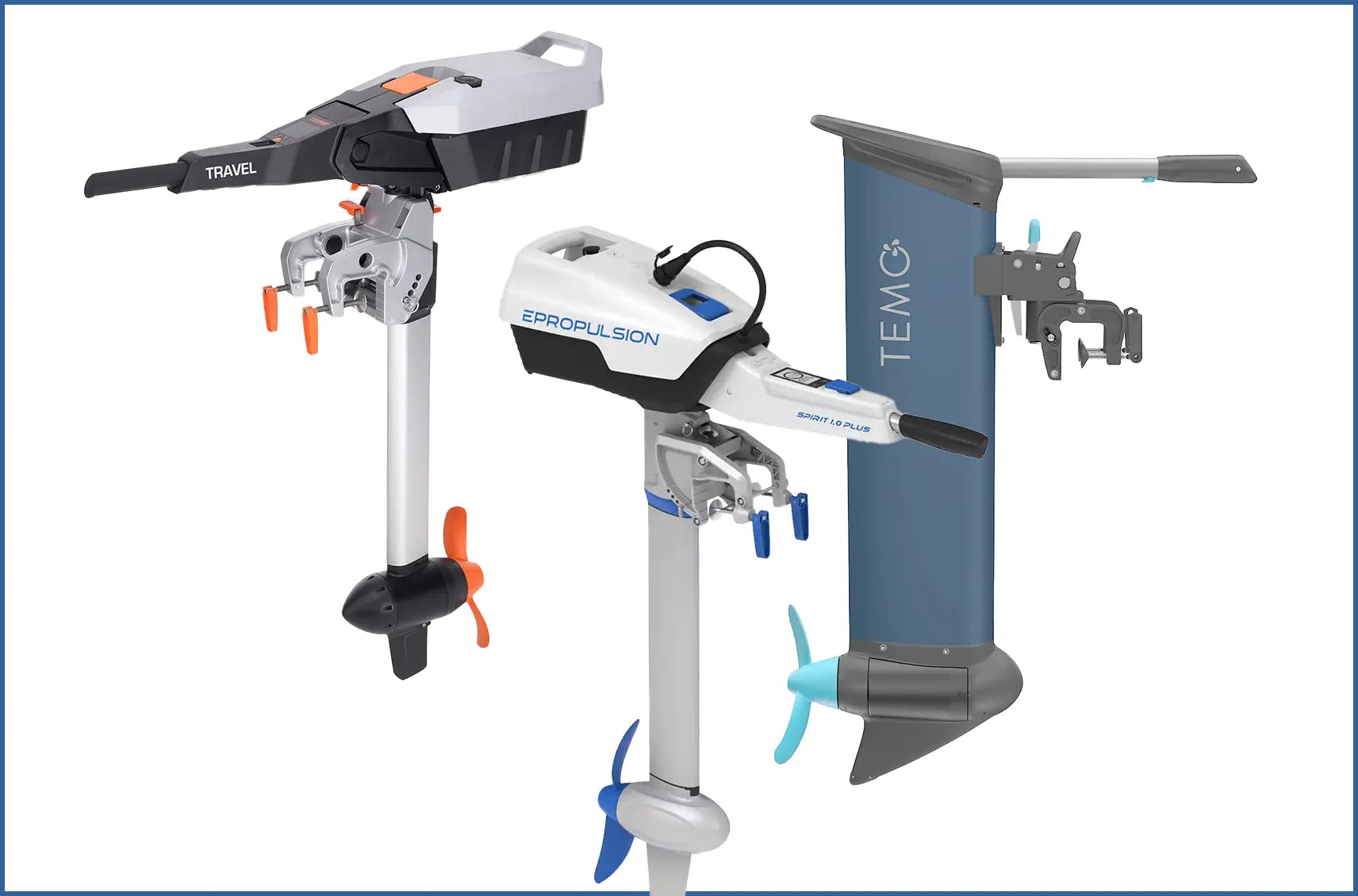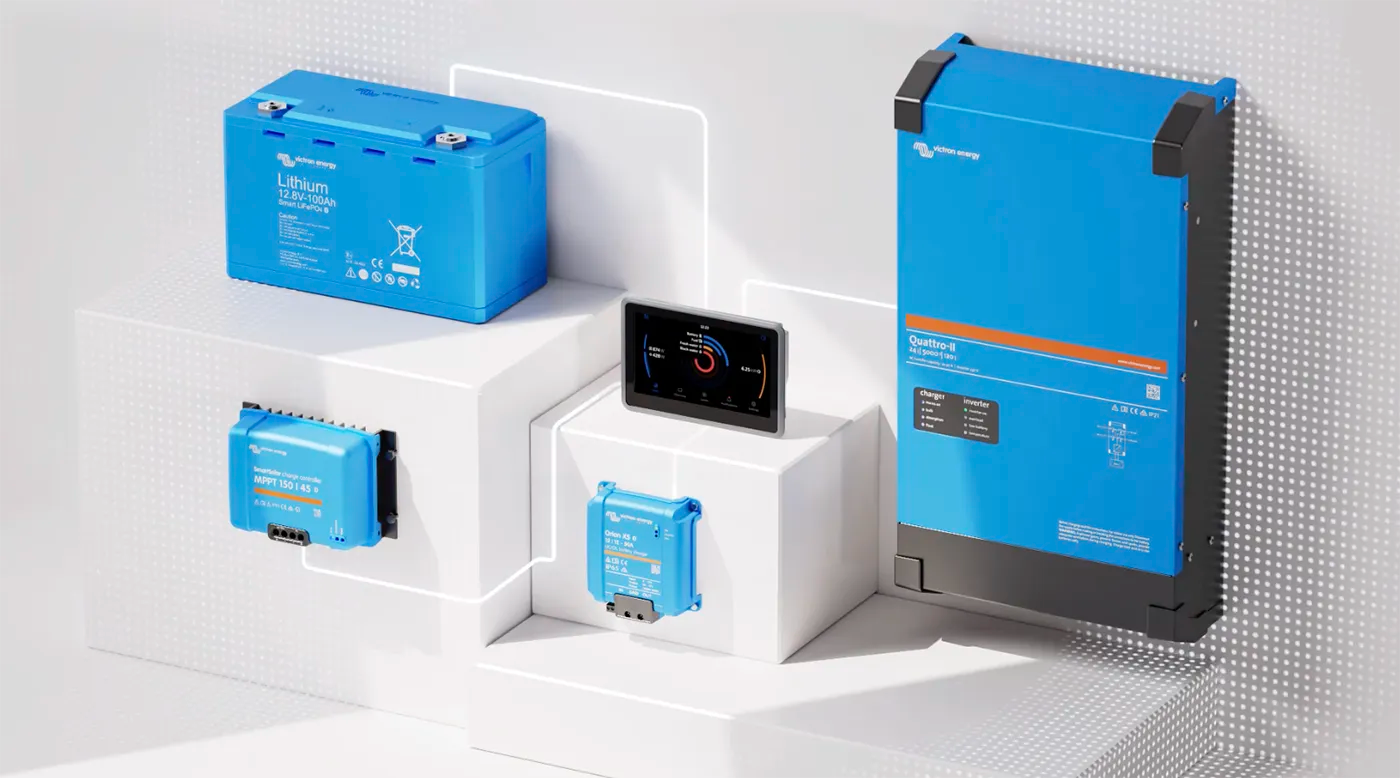How to Choose the Right Victron Energy Solar Charge Controller for Your System
When building a solar power system—whether for your boat, off-grid cabin, RV, or tiny home—one of the most important components is the solar charge controller. At Blue Marine Power, we recommend Victron Energy solar charge controllers for their efficiency, smart features, and reliability in demanding environments.
But with multiple models available—SmartSolar, BlueSolar, MPPT, PWM—how do you know which one is right for your system? Let’s break it down.
What Does a Solar Charge Controller Do?
A solar charge controller regulates the voltage and current coming from your solar panels to ensure your batteries are charged safely and efficiently. Without one, overcharging or damaging your battery bank is a real risk.
There are two main types of charge controllers:
-
PWM (Pulse Width Modulation): Simpler, more affordable, but less efficient—best for small systems.
-
MPPT (Maximum Power Point Tracking): More advanced, highly efficient, and ideal for systems where panel voltage exceeds battery voltage.
Why Victron?
Victron Energy is a leader in solar and off-grid power products. Their solar charge controllers are:
-
Highly efficient (up to 98% MPPT efficiency)
-
Compatible with lithium and lead-acid batteries
-
Designed with smart features like Bluetooth monitoring
-
Built to withstand marine, mobile, and off-grid conditions
SmartSolar vs. BlueSolar
Victron’s charge controllers come in two families:
-
SmartSolar: Includes built-in Bluetooth for wireless configuration and monitoring via the VictronConnect app. These are ideal for most users who want easy setup and real-time system performance.
-
BlueSolar: Offers the same charging performance but without built-in Bluetooth. You can add it later with a separate VE.Direct Bluetooth dongle.
Our recommendation: Go with SmartSolar unless you have specific needs or are trying to reduce upfront cost.
Key Specs to Consider
When choosing a Victron solar charger, look at these specs:
-
Battery Voltage: Most models support 12V and 24V systems, while some also support 48V.
-
Max PV Voltage (Voc): This is the maximum open-circuit voltage your panel array can produce. Make sure it's within the controller’s limits.
-
Max Charge Current: Determine how much current your controller can send to the battery. Match this to your battery bank’s charging requirements.
Victron SmartSolar MPPT Models: Quick Comparison
| Model | Max PV Voltage | Max Charge Current | System Voltage | Ideal For |
|---|---|---|---|---|
| 75/10 | 75V | 10A | 12/24V | Small solar setups |
| 100/20 | 100V | 20A | 12/24/48V | Medium-size systems, flexible |
| 150/35 | 150V | 35A | 12/24/36/48V | Larger systems, higher voltages |
| 250/100 VE.Can | 250V | 100A | 12/24/36/48V | High-capacity, networked setups |
| RS 450/100 | 450V | 100A | 48V | Large off-grid installations |
Don’t Forget: Monitoring & Remote Access
All Victron SmartSolar controllers can be paired with Victron’s GX devices (like Cerbo GX) for remote system monitoring through the VRM Portal. You’ll get access to detailed stats, alerts, and control from anywhere with internet access—especially useful for unattended systems.
Final Tips
-
Oversize your controller slightly so it’s not operating at maximum capacity all the time.
-
Match the controller to your battery chemistry—Victron supports lithium, AGM, and gel batteries.
-
Use the Victron MPPT Calculator to size your controller based on your panel configuration and location.
Still Unsure? Let Us Help
Choosing the right solar charger is critical to getting the best performance from your system. Contact our team at Blue Marine Power and we’ll help you size and select the perfect Victron controller for your application.



